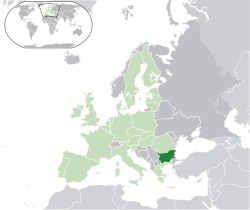Bulgaria Nuclear Plant Gets High Safety Marks
By SETimes
By Svetla Dimitrova
Almost all of the nuclear power plants in the EU need improvements in their safety features, the European Commission (EC) said earlier this month as it announced the results of stress tests of the 145 reactors operating on the bloc’s territory.
“Altogether, the safety situation in Europe is at a good level, it is satisfactory,” EU Energy Commissioner Gunther Oettinger said at a press briefing in Brussels, presenting the results of the nuclear stress tests. “However, and this is more important, nearly everywhere there is a major potential for improvement.”

Although Brussels did not rank the surveyed plants, media in Bulgaria said the findings showed Kozloduy as one of the safest plants in the EU.
Ivan Hinovski, a nuclear safety expert and head of the Bulgarian Energy Forum, said that none of the actions that the EC was asking Bulgaria to take entailed “serious hardware reconstruction works.”
“The recommended improvements at Kozloduy are relatively easy to achieve and not too costly an investment,” he told SETimes.
All measures recommended in the EC report are being implemented with the funding set aside for the company’s investment programme, the Bulgarian Nuclear Power Plant’s public information office told SETimes.
“The … report from the peer review shows that Kozloduy has a high degree of robustness and sufficient reserves to withstand extreme external hazards,” the office said.
The decision to check the safety of all nuclear reactors across the EU was taken in the wake of the accident at the Fukushima Nuclear Power Plant following the 9.0-magnitude earthquake and the tsunami that hit Japan in March 2011.
The main objective of the exercise was to assess the plants’ safety and strength in the event of extreme natural events, as well as their ability to deal with severe accidents, the EC said.
“These stress tests have shown that a number of international standards, which have been established by the IAEA (International Atomic Energy Agency) and other global practices are not being applied in EU plants,” Oettinger told reporters. “It’s the first time that we have this Europe-wide overview and so now we know exactly where the standards are lower than those, which are internationally recommended and which are not in line with the state of the art.”
Up to 25 billion euros may be needed for the implementation of the required safety improvements and other recommended measures by 2015, the commissioner said.
The EC urged Romania to consider implementing regulations adequately reflecting the extremely high probability of large earthquakes in the country.
“The absence of a seismic level comparable to the SL-1 (seismic level 1) of IAEA leading to plant shutdown and inspection is regarded a critical issue,” it said, seeing also a need for the “volumetric protection of the buildings containing safety related equipment” to be improved.
The EC recommended that “the adequacy of paleoseismological studies should be further analysed” in Bulgaria. Both countries were also told to address certain weaknesses in the area of severe accident management.
